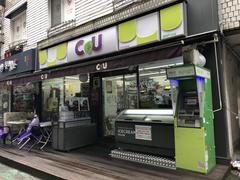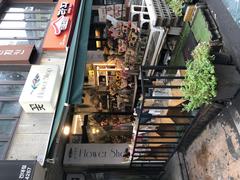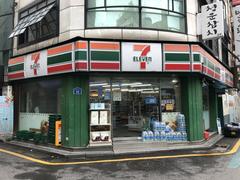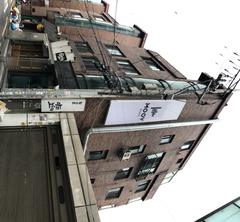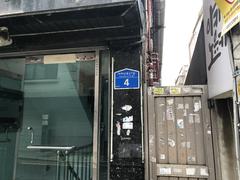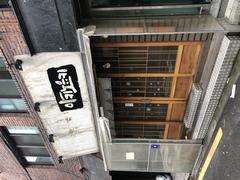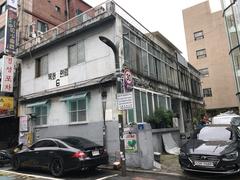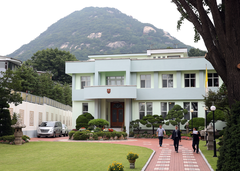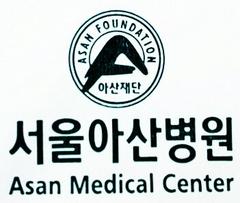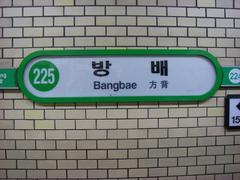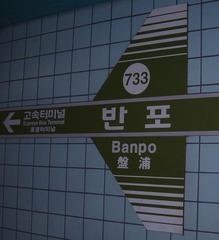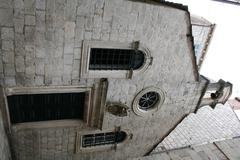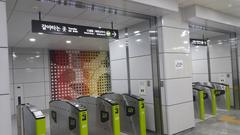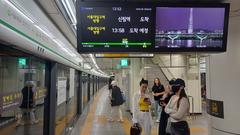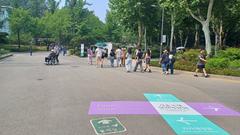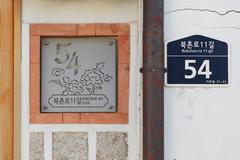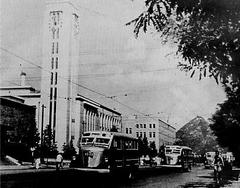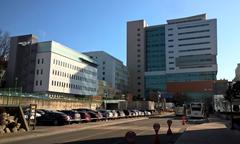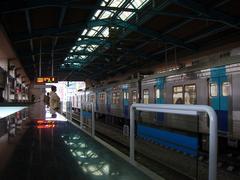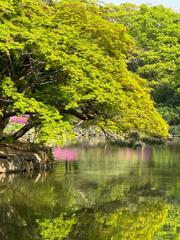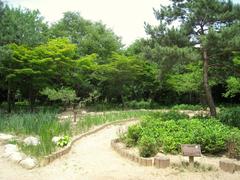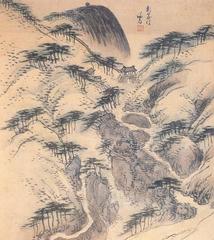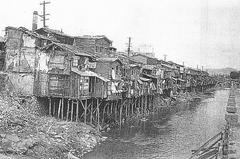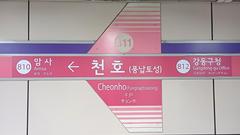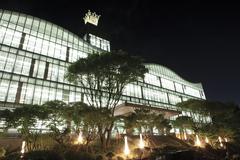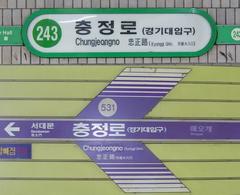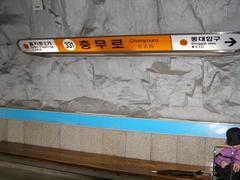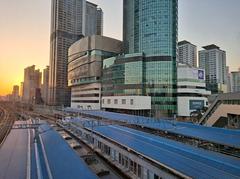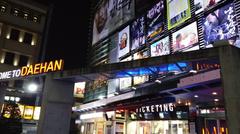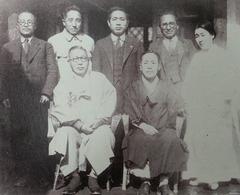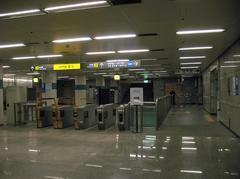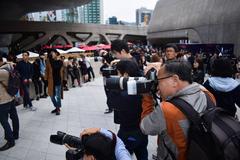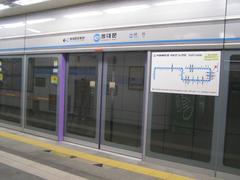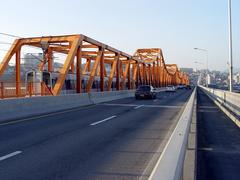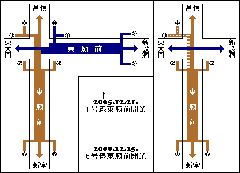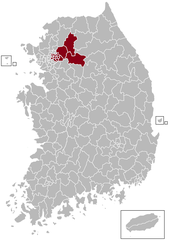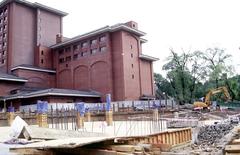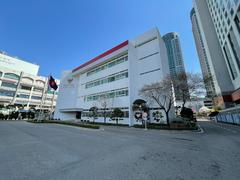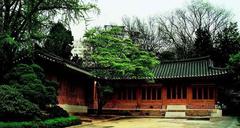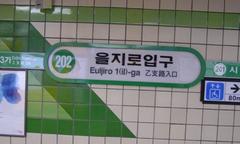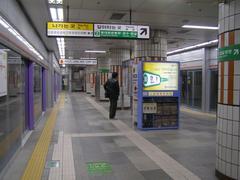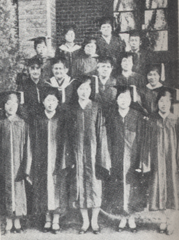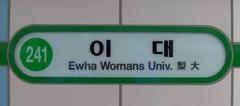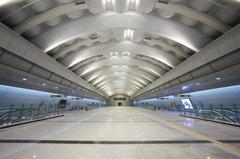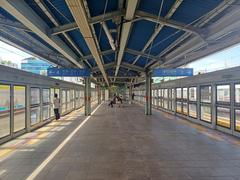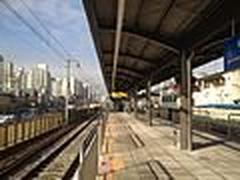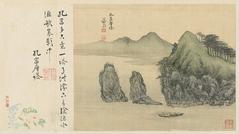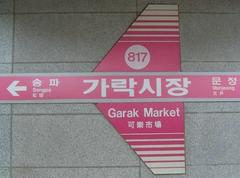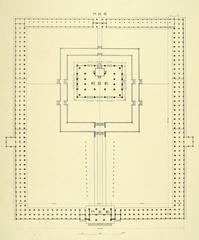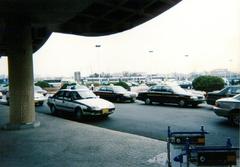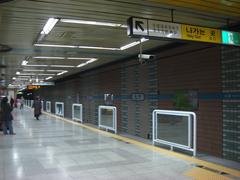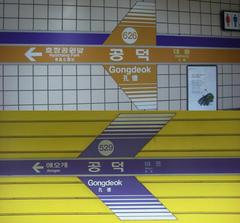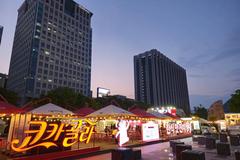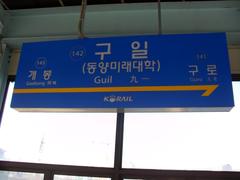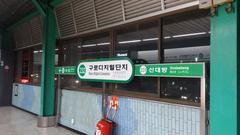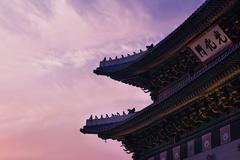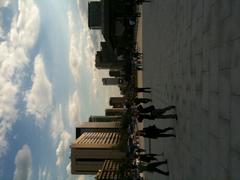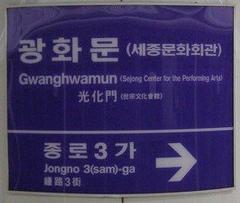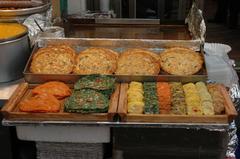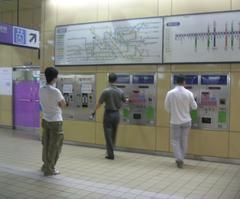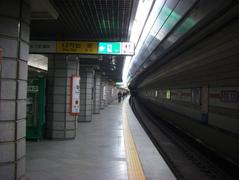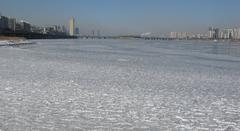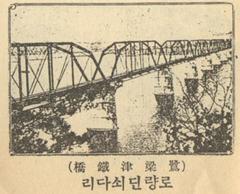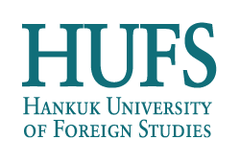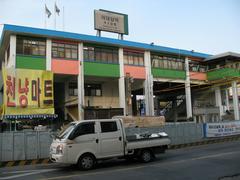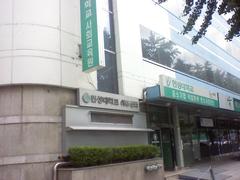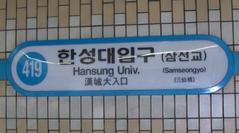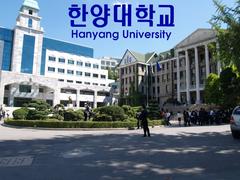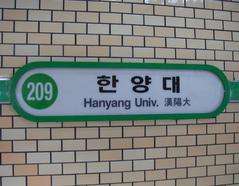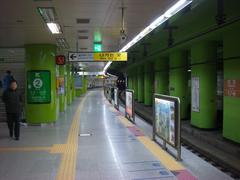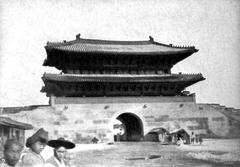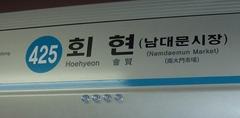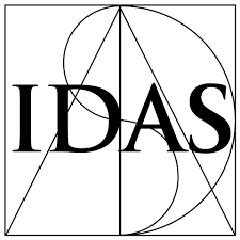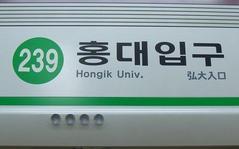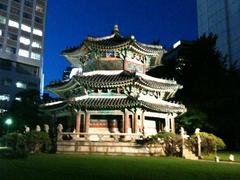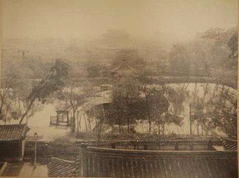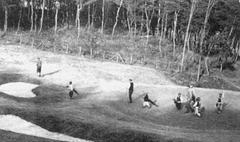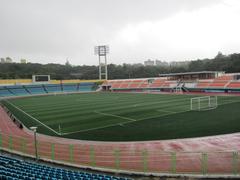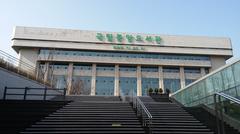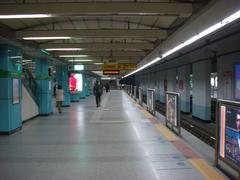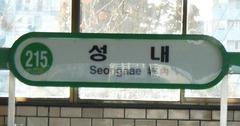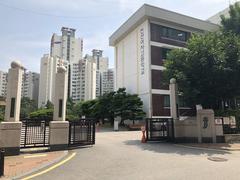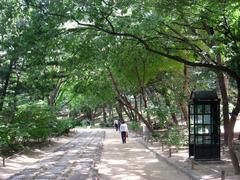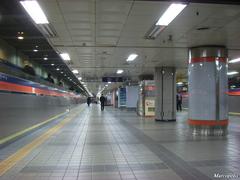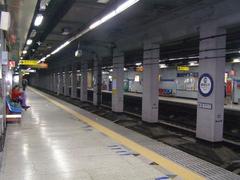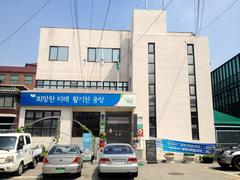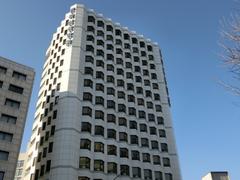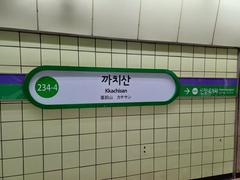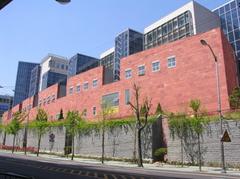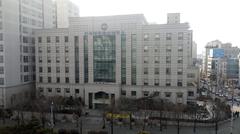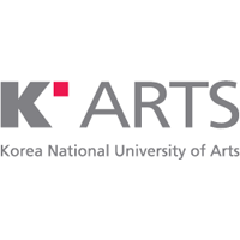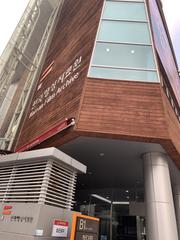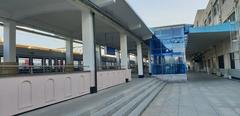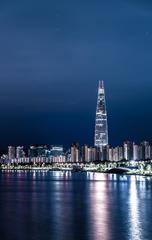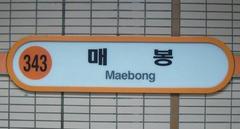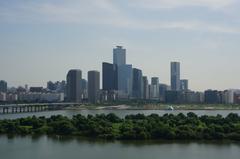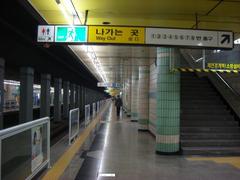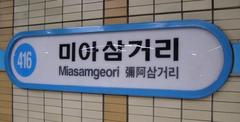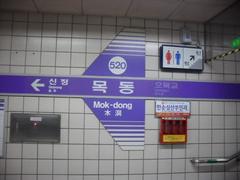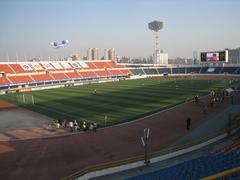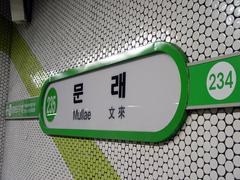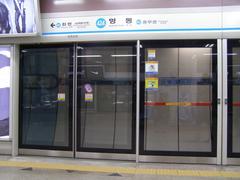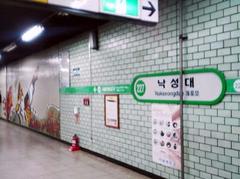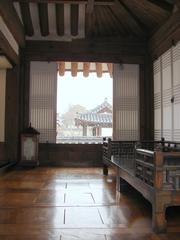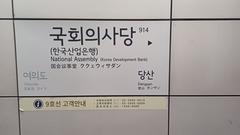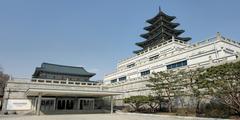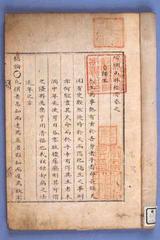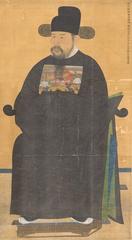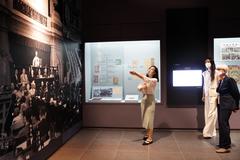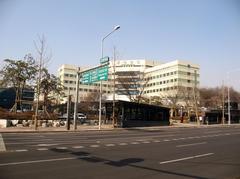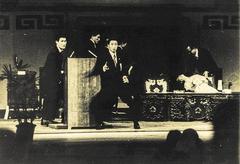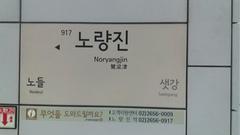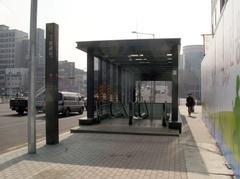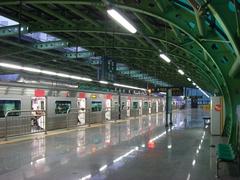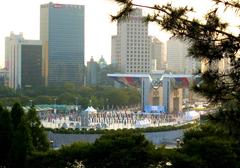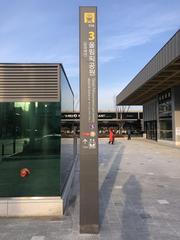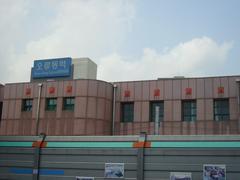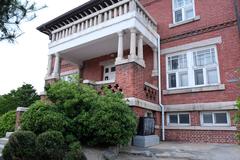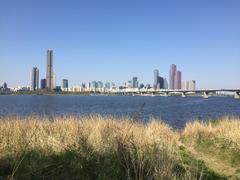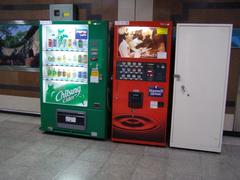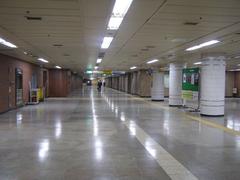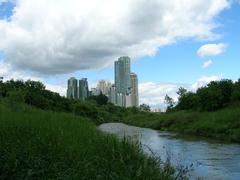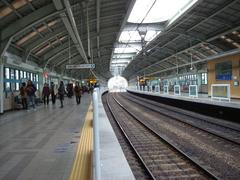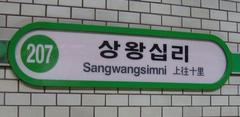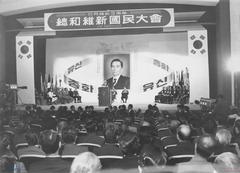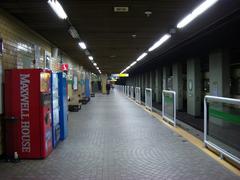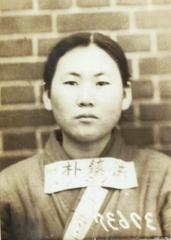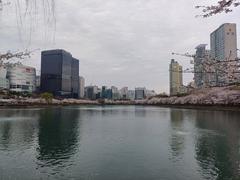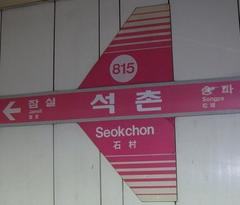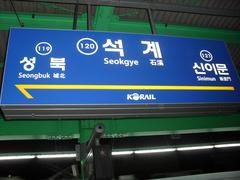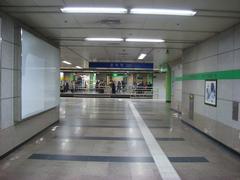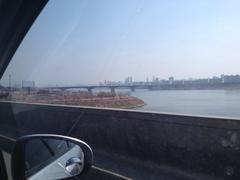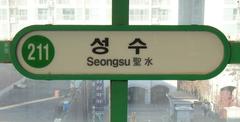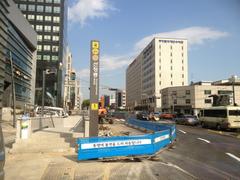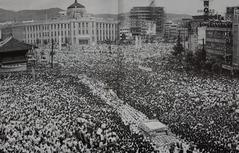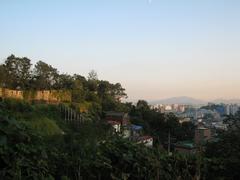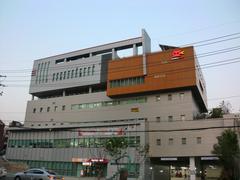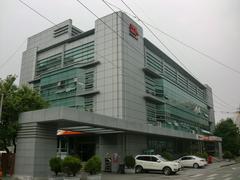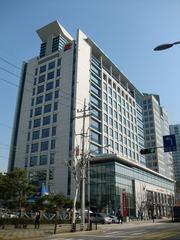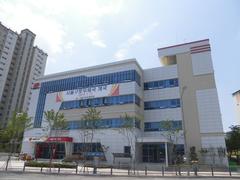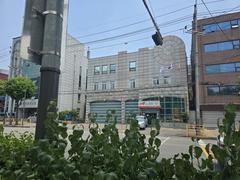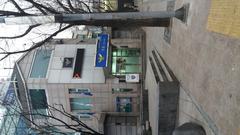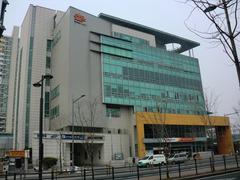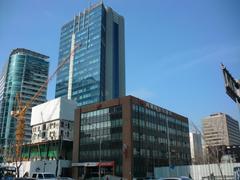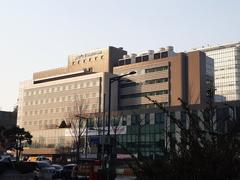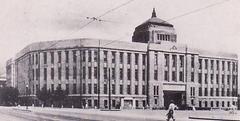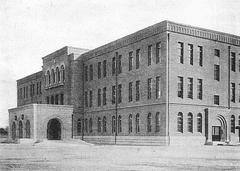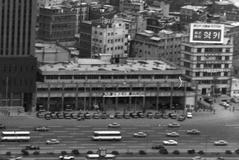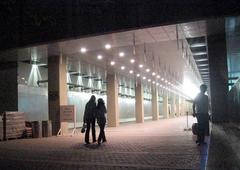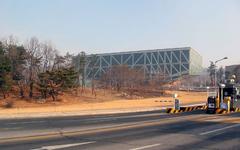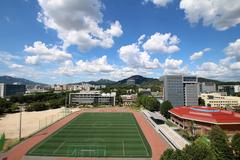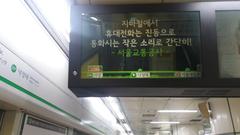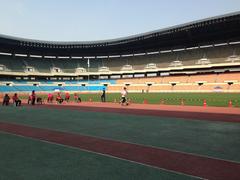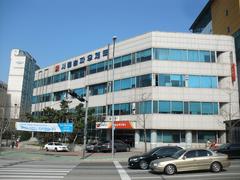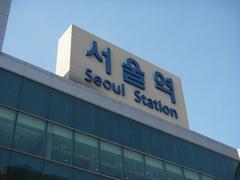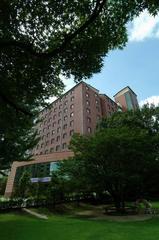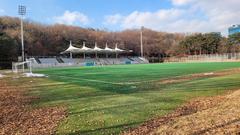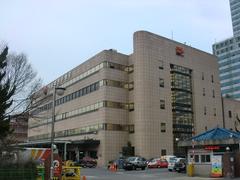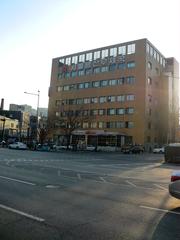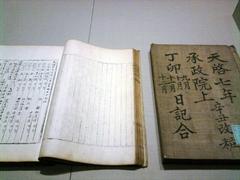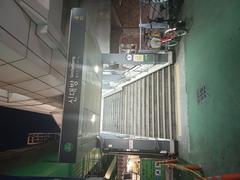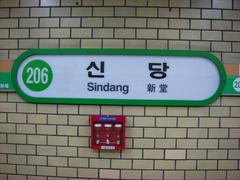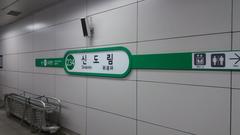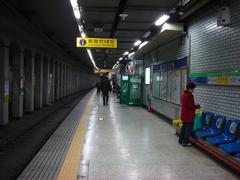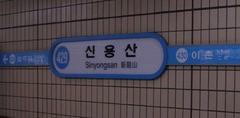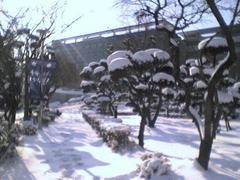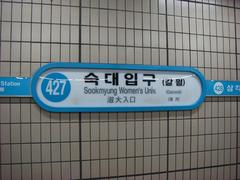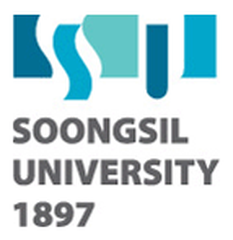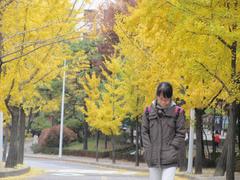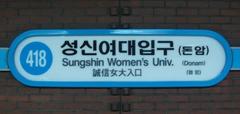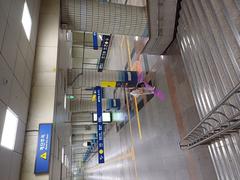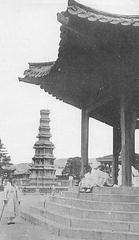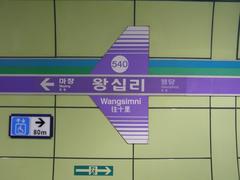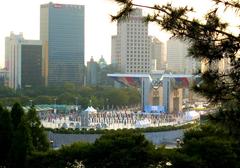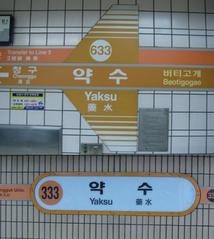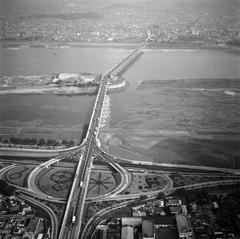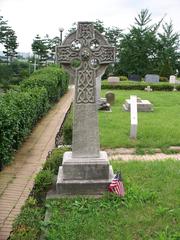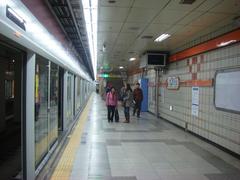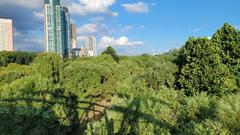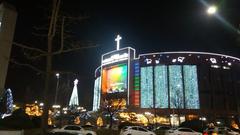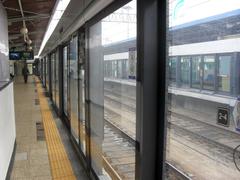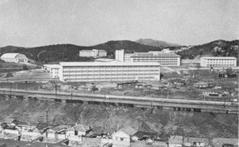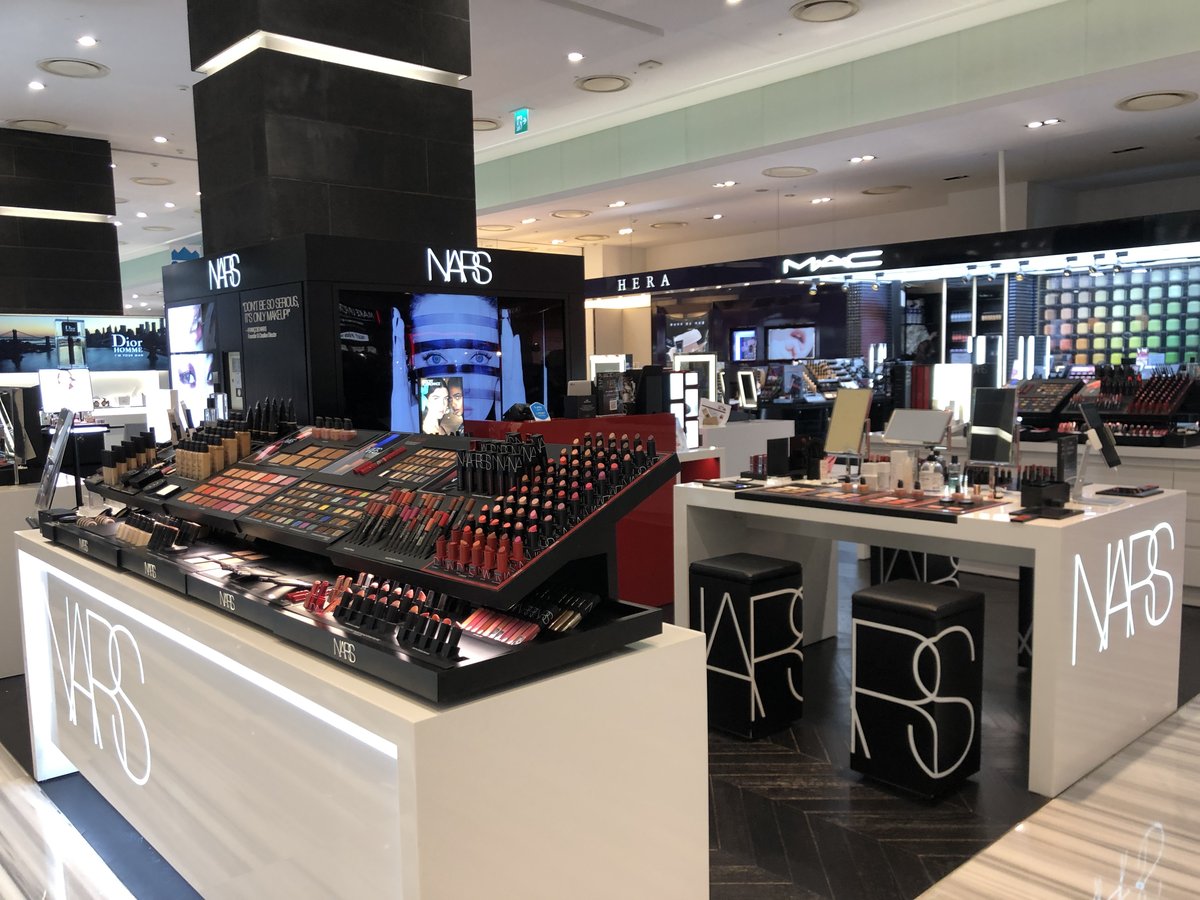
Visiting 고구려정: History, Tickets, and Tips
Date: 19/07/2024
Introduction
Seoul, the vibrant capital of South Korea, is a city where the past and present coexist harmoniously. Among its many historical treasures, the Goguryeojeong Pavilion stands out as a testament to Korea’s rich cultural heritage. The pavilion offers visitors a unique glimpse into the Goguryeo period, one of the Three Kingdoms of Korea, known for its military prowess and architectural advancements. This comprehensive guide aims to provide all the necessary information for those planning to visit Goguryeojeong Pavilion, from its historical significance and visiting hours to travel tips and nearby attractions. By delving into the past, we can appreciate the intricate tapestry of history that has shaped modern Seoul, making it a must-visit destination for history enthusiasts and casual travelers alike.
Table of Contents
- Introduction
- Visiting Goguryeojeong Pavilion - Hours, Tickets, and Travel Tips
- Discovering the Secrets of Changdeokgung Palace - Visiting Hours, Tickets, and Historical Insights
- Exploring the Historical Significance of Goguryeojeong in Seoul - Visitor Information and Travel Tips
Visiting Goguryeojeong Pavilion - Hours, Tickets, and Travel Tips
Introduction
The Goguryeojeong Pavilion is a historical gem nestled in Seoul, South Korea. Whether you’re a history buff or a casual traveler, this pavilion offers a glimpse into Korea’s rich cultural heritage. This guide will provide you with all the necessary information, from visiting hours to travel tips, ensuring you make the most of your visit.
Correct Spelling and Alternative Names
While commonly romanized as ‘Goguryeojeong,’ the pavilion’s name can also be spelled as ‘Goguryojung’ or ‘Goguryeojung.’ In Hangul, the official writing system of South Korea, it is written as 고구려정. Understanding these variations can be helpful when searching for information or navigating signage.
Historical Significance
Goguryeojeong Pavilion dates back to the Goguryeo period, one of the Three Kingdoms of Korea. It served as a strategic military post and later became a symbol of architectural and cultural prowess. The pavilion offers breathtaking views and serves as a serene spot for reflection.
Visiting Information
- Opening Hours: The pavilion is open daily from 9:00 AM to 6:00 PM. It is recommended to visit early in the morning to avoid crowds.
- Tickets: Entrance to Goguryeojeong Pavilion is free of charge, but donations are welcome to help with the maintenance and preservation of the site.
- Accessibility: The site is partially accessible to visitors with disabilities. Ramps are available, but some areas may require assistance.
Travel Tips
- Best Time to Visit: Spring and autumn offer the best weather and picturesque scenery.
- How to Get There: The pavilion is accessible by public transport. Take Line 3 of the Seoul Subway to Anguk Station, and from there, it is a short walk.
- What to Bring: Comfortable walking shoes, a camera for capturing the views, and a water bottle.
Nearby Attractions
- Bukchon Hanok Village: A traditional Korean village nearby, offering a glimpse into Korea’s past.
- Gyeongbokgung Palace: One of the most iconic palaces in Seoul, just a short distance away.
- Insadong: A vibrant neighborhood known for its arts, crafts, and street food.
Special Events and Guided Tours
Goguryeojeong Pavilion often hosts cultural events and guided tours. Check the official website for up-to-date information on upcoming events. Guided tours are available in multiple languages and provide a deeper understanding of the site’s history and significance.
Photographic Spots
The pavilion offers numerous spots for photography enthusiasts. The panoramic views from the top are especially popular. Visit during the golden hour for the best lighting conditions.
FAQ
- Q: What are the opening hours of Goguryeojeong Pavilion?
- A: The pavilion is open daily from 9:00 AM to 6:00 PM.
- Q: Is there an entrance fee?
- A: No, entrance is free, but donations are encouraged.
- Q: How can I get to Goguryeojeong Pavilion?
- A: Take Line 3 of the Seoul Subway to Anguk Station. The pavilion is a short walk from there.
Visit and Stay Up to Date
For the latest updates, download the Audiala mobile app, check out our other related posts, or follow us on social media. Plan your visit today and immerse yourself in the rich history and culture of Goguryeojeong Pavilion.
Discovering the Secrets of Changdeokgung Palace - Visiting Hours, Tickets, and Historical Insights
Introduction
Nestled in the heart of Seoul, Changdeokgung Palace is a hidden gem waiting to be explored. This article delves into the rich history, cultural significance, and visitor information you need to make the most of your visit.
History of Changdeokgung Palace
Changdeokgung Palace, a UNESCO World Heritage Site, was constructed in 1405 during the Joseon Dynasty. Known for its harmonious blend with the surrounding natural landscape, it served as the principal residence for many Joseon kings and showcases the pinnacle of Korean palace architecture.
Cultural Significance
Changdeokgung Palace holds immense cultural significance. It is renowned for its Secret Garden (Huwon), which was a place of leisure for the royal family and is considered a masterpiece of Korean garden design. The palace represents the unique architectural style and aesthetic values of the Joseon era.
Visitor Information
To make the most of your visit, here are some key details:
- Location: 99 Yulgok-ro, Jongno-gu, Seoul, South Korea
- Opening Hours: Generally open from 9:00 AM to 6:00 PM (hours may vary by season)
- Ticket Prices: Vary by tour type, with general admission typically around 3,000 KRW and special tours such as the Secret Garden tour costing extra
Travel Tips
To enhance your visit to Changdeokgung Palace:
- Check Local Tourism Websites: Websites like Visit Seoul can provide updated information on current tours and events.
- Guided Tours: Consider joining a guided tour to gain deeper insights into the palace’s history and architecture.
Nearby Attractions
While visiting Changdeokgung Palace, consider exploring these nearby historical sites:
- Gyeongbokgung Palace: A stunning example of Korean architecture and history.
- Bukchon Hanok Village: A preserved area showcasing traditional Korean homes.
- Jongmyo Shrine: A Confucian shrine dedicated to the memorial services for the deceased kings and queens of the Joseon Dynasty.
Accessibility
Seoul is generally accessible with a well-connected public transportation system. Ensure you check maps and transit routes for the most efficient ways to travel around the city.
FAQ
- Q: What are the visiting hours for Changdeokgung Palace?
- A: The palace is generally open from 9:00 AM to 6:00 PM, but hours can vary by season.
- Q: How much do tickets cost for Changdeokgung Palace?
- A: General admission is typically around 3,000 KRW, with additional fees for special tours like the Secret Garden tour.
Call to Action
Discover more about Seoul’s hidden gems and historical sites by downloading our mobile app Audiala. Stay updated by following us on social media for the latest travel tips and articles.
Exploring the Historical Significance of Goguryeojeong in Seoul - Visitor Information and Travel Tips
Introduction
Goguryeojeong, although not a widely recognized site in Seoul, holds a name steeped in historical significance. This article delves into the context and importance of Goguryeojeong, providing comprehensive visitor information, travel tips, and insights into nearby attractions to enhance your exploration of Seoul’s rich heritage.
Context and Historical Significance
Goguryeo’s Connection to Seoul
While ‘고구려정’ directly translates to ‘Goguryeo Pavilion,’ there may be no prominent historical landmark in Seoul with this exact name. It is possible that the name is either slightly inaccurate, a lesser-known location, or a privately owned property. Despite this, the name ‘Goguryeo’ itself is historically significant. Goguryeo (고구려, 37 BCE – 668 CE) was one of the Three Kingdoms of Korea, known for its powerful military and vast territory. Goguryeo’s influence extended to the Han River region, where Seoul is located. Here are some of the ways Goguryeo’s legacy is present in Seoul:
- Achasan Fortress (아차산성): Located on Mount Achasan in eastern Seoul, this mountain fortress dates back to the Goguryeo period. It served as a strategic defense point overlooking the Han River. Today, it is a popular hiking destination offering panoramic city views and a glimpse into Goguryeo’s military architecture.
- Mongchontoseong Fortress (몽촌토성): Situated within the Olympic Park, this earthen fortress is believed to have been built during the Goguryeo era. It served as an important administrative center. Excavations have unearthed various artifacts, shedding light on life during that time.
- UNESCO World Heritage Sites: Seoul is home to several UNESCO World Heritage Sites linked to the Goguryeo period, including the Royal Tombs of the Joseon Dynasty, which reflect architectural styles influenced by Goguryeo traditions.
Visitor Information
Ticket Prices and Opening Hours
While specific visitor information for Goguryeojeong might not be available, here is some useful information for visiting the related sites:
- Achasan Fortress: Free entry. Open year-round.
- Mongchontoseong Fortress: Free entry. Open year-round.
- National Museum of Korea: Free entry. Open Tuesday to Sunday, 10:00 AM – 6:00 PM.
- Seoul History Museum: Free entry. Open Tuesday to Sunday, 9:00 AM – 8:00 PM.
Travel Tips and Access
- Achasan Fortress: Accessible via Achasan Station (Line 5) or Gwangnaru Station (Line 5). The hike to the fortress is moderate and offers stunning views of Seoul.
- Mongchontoseong Fortress: Accessible via Mongchontoseong Station (Line 8) or Olympic Park Station (Line 5). The park offers various amenities and scenic spots for a relaxing visit.
- National Museum of Korea: Accessible via Ichon Station (Line 4). The museum is a short walk from the station and offers extensive exhibits on Korean history and culture.
- Seoul History Museum: Accessible via Gwanghwamun Station (Line 5). The museum is located in central Seoul, making it easy to incorporate into a day of sightseeing.
Nearby Attractions
- Lotte World Tower: Near Mongchontoseong Fortress, this modern skyscraper offers shopping, dining, and an observation deck with panoramic views of Seoul.
- Gyeongbokgung Palace: Located near the Seoul History Museum, this iconic palace offers a glimpse into Korea’s royal history.
- Namsan Seoul Tower: A short distance from the National Museum of Korea, this tower provides a bird’s-eye view of the city and is a popular tourist destination.
Exploring Goguryeo’s Legacy in Seoul
Even without the precise location of Goguryeojeong, tourists interested in Goguryeo’s history can still have a fulfilling experience in Seoul:
- Visit Achasan Fortress and Mongchontoseong Fortress: Hike through these historical sites, imagining the lives of the Goguryeo people who once inhabited them.
- Explore the National Museum of Korea: This museum houses an extensive collection of Goguryeo artifacts, including murals, pottery, and armor, providing insights into the kingdom’s art, culture, and daily life.
- Visit the Seoul History Museum: Learn about the history of Seoul and the surrounding region, including the influence of Goguryeo on the city’s development.
- Take a guided tour: Several tour companies offer specialized tours focusing on Seoul’s ancient history, including the Goguryeo period.
FAQ
- Q: What is Goguryeojeong?
- A: Goguryeojeong translates to ‘Goguryeo Pavilion,’ but there is no widely recognized site in Seoul with this exact name. It may refer to a lesser-known or privately owned location.
- Q: How can I learn more about Goguryeo’s history in Seoul?
- A: Visit Achasan Fortress, Mongchontoseong Fortress, the National Museum of Korea, and the Seoul History Museum.
- Q: Are there any guided tours available?
- A: Yes, several tour companies offer specialized tours focusing on Seoul’s ancient history, including the Goguryeo period.
Conclusion
While the mystery of Goguryeojeong remains, exploring the remnants of Goguryeo’s legacy in Seoul offers a captivating journey through time, connecting visitors to a significant chapter in Korean history. Be sure to check out the mentioned historical sites and museums for a deeper understanding of this ancient kingdom. For more updates and travel tips, download the Audiala mobile app and follow us on social media.
Conclusion
Exploring the historical sites of Seoul, such as the Goguryeojeong Pavilion, Changdeokgung Palace, and other remnants of the Goguryeo period, offers a profound connection to Korea’s rich cultural and historical legacy. While the exact location of Goguryeojeong remains a mystery, the influence of the Goguryeo kingdom is evident in many of Seoul’s historical landmarks. Whether you are hiking up to Achasan Fortress, strolling through the serene Secret Garden of Changdeokgung Palace, or visiting the extensive exhibits at the National Museum of Korea, each site provides a unique window into Korea’s ancient past.
By visiting these sites, you not only immerse yourself in history but also contribute to the preservation of these invaluable cultural treasures. For the latest updates and more travel tips, be sure to download the Audiala mobile app and follow us on social media. Embark on this historical journey and discover the stories that have shaped Seoul into the vibrant city it is today.
References
- Visiting Goguryeojeong Pavilion - Hours, Tickets, and Travel Tips, 2024, Audiala source
- Discovering the Secrets of Changdeokgung Palace - Visiting Hours, Tickets, and Historical Insights, 2024, Audiala source
- Exploring the Historical Significance of Goguryeojeong in Seoul - Visitor Information and Travel Tips, 2024, Audiala source



































